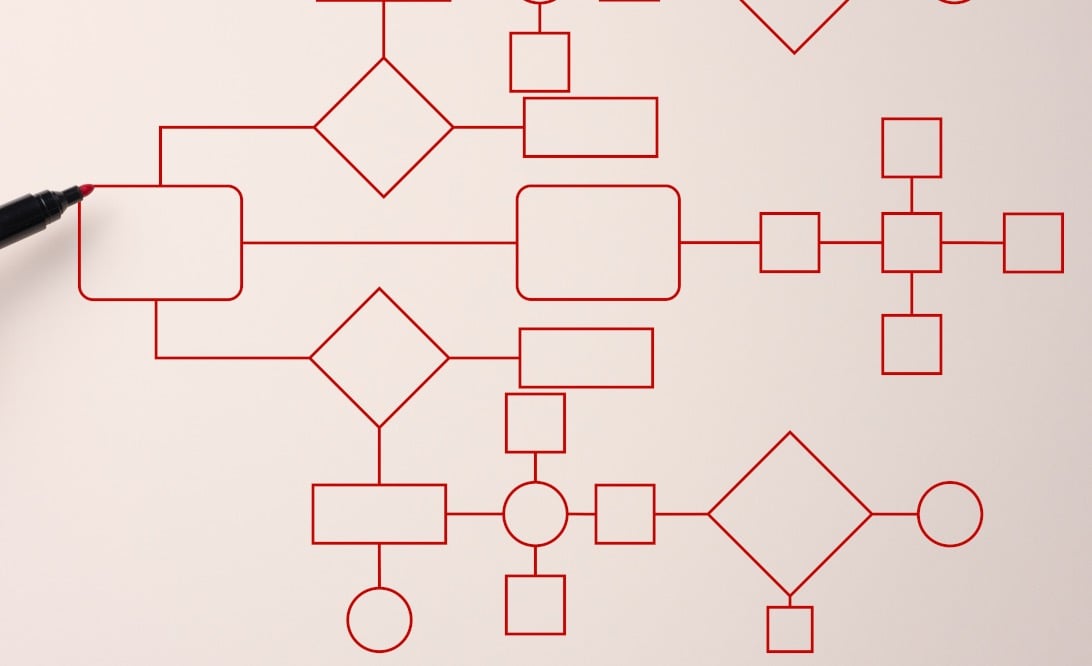In today's fast-paced digital landscape, the volume of data generated from various sources, such as social media, website interactions, online transactions, and customer feedback, has skyrocketed.
This data deluge has transformed marketing operations, providing businesses with unprecedented opportunities to understand their target audiences and tailor marketing strategies accordingly. From identifying consumer behavior patterns to predicting trends and preferences, data has become the lifeblood that fuels effective marketing campaigns.
However, with the increasing importance of data-driven decision-making comes a responsibility to handle and manage data responsibly and in compliance with privacy laws such as GDPR.
In this post, we will delve into the concept of data flushing, a crucial aspect of data management that marketers need to understand to maintain compliance and uphold consumer trust.
What is a data flush?
Data flushing, also known as data purging or data erasure, refers to the systematic and permanent removal of data from a company's databases or storage systems. This process ensures that outdated, inaccurate, or sensitive information is expunged, reducing the risk of unauthorized access, data breaches, and potential misuse.
This practice is especially important when businesses collect and store vast amounts of customer data, as it directly relates to privacy concerns and legal obligations regarding data protection.
Why should data flushing matter to marketers?
In the ever-evolving digital landscape, businesses gather vast amounts of data to gain valuable insights into consumer behavior and optimize marketing strategies. However, data accumulation comes with responsibility. Failing to manage data properly can lead to significant ramifications, ranging from privacy breaches to legal consequences.

One of the most critical concerns is the increased risk of data breaches. Accumulating unnecessary data provides more opportunities for cybercriminals to access sensitive consumer information, leading to potential financial losses and severe damage to the company's reputation. Moreover, disregarding data protection regulations can bring about legal and financial consequences. Compliance with laws such as the General Data Protection Regulation (GDPR) or the California Consumer Privacy Act (CCPA) is crucial to safeguarding consumer rights and ensuring data privacy.
Non-compliance can result in substantial fines and legal actions against the company, leading to additional financial burdens and reputational damage. Operational inefficiency is another adverse effect of neglecting data flushing. Cluttered databases slow down data processing and retrieval, affecting various business operations. Marketing efforts can be hampered due to difficulties in accessing relevant customer data, leading to suboptimal campaign targeting and reduced customer engagement. Additionally, decision-making processes may suffer as essential insights are buried under irrelevant or outdated data, potentially impacting business growth and competitiveness.
Therefore, a well-implemented data-flushing strategy provides several benefits:
- Enhanced Data Security: Regularly purging unnecessary data minimizes the risk of data exposure, protecting both customers and the business.
- Compliance Adherence: A structured data-flushing approach ensures adherence to privacy laws and regulations, mitigating legal risks.
- Improved Data Quality: Removing outdated or incorrect data improves the overall data quality, leading to more accurate marketing insights.
- Optimized Data Management: Efficient data flushing streamlines database operations, improving data analysis and enhancing overall marketing productivity.
How does a data flush work?
As now identified, the data flushing process is a critical aspect of data management in all departments, and its implementation may differ based on factors such as the company's size, data volume, and technological capabilities. To efficiently manage data retention, various methods are commonly employed.
For smaller datasets with limited retention needs, manual deletion is a straightforward approach. However, for organizations dealing with large volumes of data and requiring frequent purging, automated solutions come into play. These software tools allow for the scheduling and execution of data-flushing tasks, ensuring a more streamlined and systematic approach.

Additionally, archiving inactive data for historical purposes is another strategy that helps reduce clutter in primary databases, freeing up valuable storage space and optimizing overall data management practices. Ultimately, choosing the most suitable data flushing method depends on each company's unique requirements and goals.
Certain types of data necessitate a more robust data-flushing approach. Sensitive data that might flag a dataset for flushing includes:
- Customer and Persona Data: Agencies handling customer data for targeted campaigns must employ data flushing to avoid non-compliance and protect client reputations.
- Financial Information: Bank account details, credit card numbers, and transaction records.
- Personal Identifiable Information (PII): Names, addresses, phone numbers, and social security numbers.
- eCommerce Platforms: Online retailers must routinely flush customer payment information after transactions to prevent potential breaches.
Manual vs. Automated Flushing for Marketers
A good data-flushing strategy is essential for efficient data management, especially from a marketing perspective. Automating the data flushing process whenever possible is a strong approach that ensures consistent and timely purging of unnecessary data. This helps maintain a clean and relevant database, reducing the risk of data breaches and operational inefficiencies.
On the other hand, relying solely on manual data deletion can be a poor strategy. Manual processes can lead to oversight, meaning some irrelevant or outdated data might be left untouched, cluttering the database and hindering data-driven decision-making. Inadequate data cleansing can also result from manual efforts, potentially impacting marketing efforts and leading to suboptimal outcomes.
For marketers, data flushing matters for several reasons. Firstly, it is crucial for protecting customer trust. Responsible data flushing shows that the company is committed to safeguarding customer data and respecting their privacy. This fosters trust in the brand and encourages customers to share their information with confidence.
Secondly, legal compliance is a significant concern for marketers. Adhering to data protection regulations through compliant data flushing practices reduces the risk of facing costly legal actions and reputational damage that can arise from data breaches or non-compliance.
Lastly, efficient data flushing enables data-driven decision-making. Marketers heavily rely on data insights to design effective campaigns and targeted strategies. By ensuring that the data they use is accurate and relevant, marketers can optimize their campaign outcomes, improve customer segmentation, and drive better overall business results.
Data flushing is a critical aspect of data management for marketers. Adopting a good data-flushing strategy, ideally through automation, allows marketers to protect customer trust, comply with regulations, and make informed decisions that lead to successful marketing initiatives.
Common challenges and best practices for implementing a data flush
Implementing a data flush concept can present various challenges, but with the right approach and tools, these hurdles can be effectively addressed. Here are some common challenges and best practices for implementing a data flush strategy:
- Lack of Automation Tools: As mentioned, not having the right automation tools can hinder the smooth implementation of a data flush. To address this, it's crucial to invest in robust data management platforms that offer granular configuration options for data retention and deletion. Automation streamlines the process, ensuring consistent and timely purging of unnecessary data.
- Data Governance and Compliance: Implementing an efficient data flush strategy requires a strong data governance framework to identify and classify sensitive data properly. Ensuring compliance with data protection regulations, industry standards, and internal policies is essential. Establish clear guidelines and protocols for handling data to avoid non-compliance issues and potential legal consequences.
- Data Quality and Relevancy: Before executing a data flush, it's essential to assess the quality and relevancy of the data being retained. Outdated or inaccurate data can lead to poor decision-making and inefficient marketing efforts. Regularly review data quality and establish criteria for data relevance to optimize the process.
- Data Security and Privacy: When purging data, it's essential to handle sensitive information securely. Unauthorized access to or mishandling of data during the flushing process can lead to data breaches. Implement strong security measures, such as encryption and access controls, to protect data throughout its lifecycle.
- Stakeholder Communication: Executing regular data flushes may impact various stakeholders, including marketing teams, IT personnel, and data analysts. Effective communication is key to ensuring everyone understands the reasons behind the data flush, the process involved, and any changes that may affect their workflows.
- Data Backup and Recovery: While flushing data is essential, it's equally important to have a reliable backup and recovery strategy in place. Accidental data loss can occur during the process, so having a backup ensures data can be restored if needed.
- Scalability: As a company grows, data volumes may increase significantly, making data management more complex. Ensure that the discussed data flush strategy can scale with the organization's growth to handle larger datasets effectively.

Implementing a data flush concept requires careful planning, the right tools, and adherence to best practices. Investing in automation tools can significantly simplify the process and improve data management capabilities. Additionally, prioritizing data governance, compliance, and security while addressing potential challenges ensures a successful data flush implementation.
Conclusion
Data flushing is not just a technical process; it is a fundamental aspect of ethical and responsible marketing. By adopting a solid data-flushing strategy, businesses can safeguard customer trust, ensure legal compliance, and unlock the true potential of data-driven marketing without compromising privacy or security.














